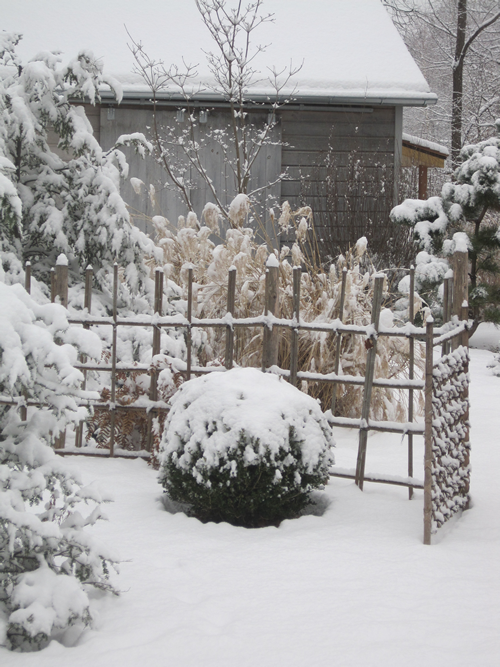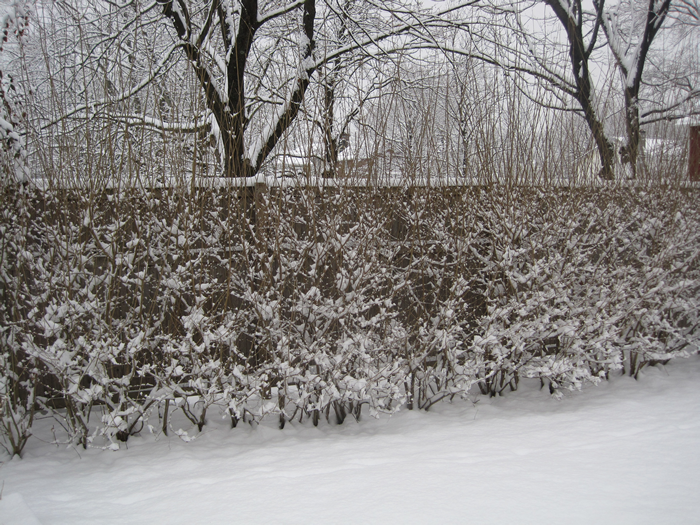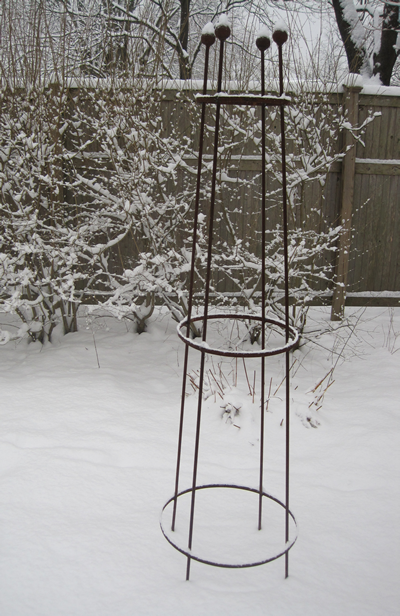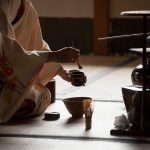This is a fascinating deconstruction of a tea house. It’s all glass, whereas tea houses of the past were dark, enclosed spaces where you could hardly see. Light and shadow were paramount aspects. But here – all is revealed.
I would love to have tea in this space. Moving through the Roji one is certainly transformed.
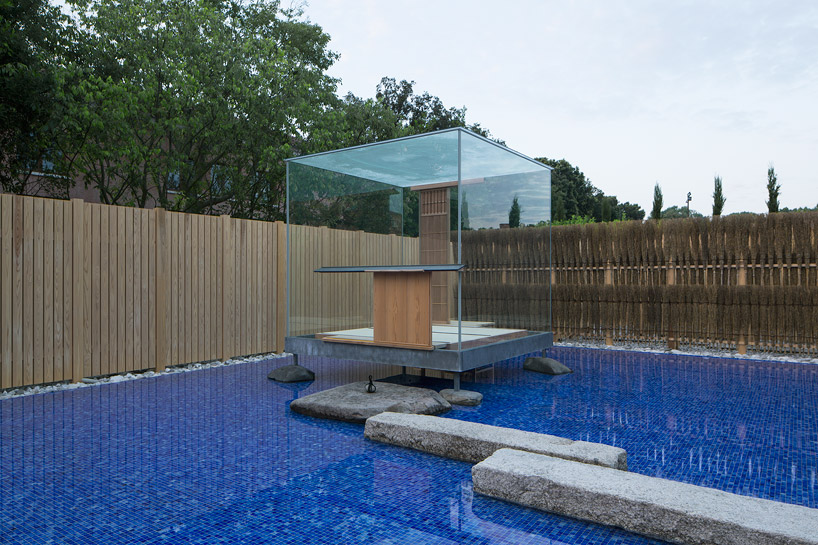
This ‘glass tea house mondrian’ by Japanese artist Hiroshi Sugimoto unites wood, glass and water as a pavilion, holding the traditional Japanese tea ceremony within its transparent wall. Read more about this tea house inspired by Venetian Glass.
Jiny Blom, a well known landscape designer said “Take risks. If someone tells you something is impossible, see if you can do it. Gardening is a knife edge between disaster and serendipity.”
I felt she was talking directly to me when I built this stone path.
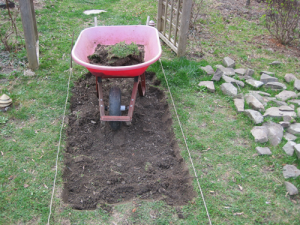
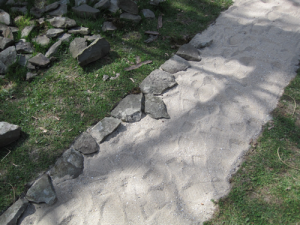
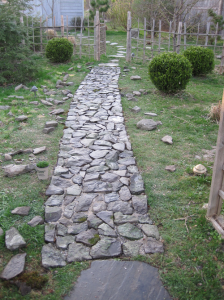
I collected the rocks from an old stone wall on my mother’s property. I dug a trench 8 inches deep and filled it with 800 pounds of rock dust and sand, then pieced the stones together like a quilt or jigsaw puzzle.
Rikyu, the brilliant tea master of the 16th century, said that the design of the Roji should be sixty percent practical and forty percent aesthetic. This path meets his criteria.
I’ve planted creeping thyme in the spaces between the stones. I wasn’t sure it would like the conditions: was there enough light, was the soil too sandy, did it drain well enough…? It’s taken a couple of years but slowly the thyme is making itself at home.
The path needs periodic weeding. I get down on my hands and knees, my nose inches from the stones and delicatly separate the weeds from the thyme. It’s a garden job that could easily be forgotten or put aside as too much trouble, but in the late afternoon when the light is gentle and the air soft, to get down on the ground inches from the earth is a task I’m grateful for.
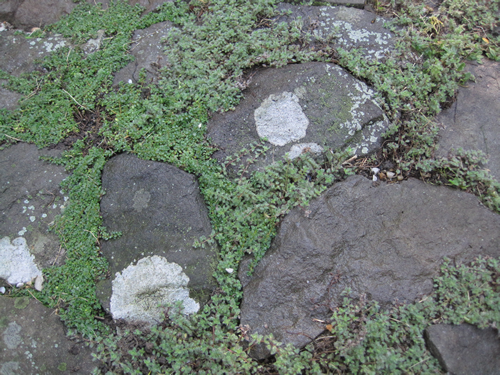
– excerpt from A Tea Garden in Tivoli
I went over to Olana the other day looking for trees that had big leaves. I needed a leaf to use as a lid on a glass water container for tea. Here you can see the leaves I collected. The vase is the squiggly shaped glass object – designed by Alvaro Alto.
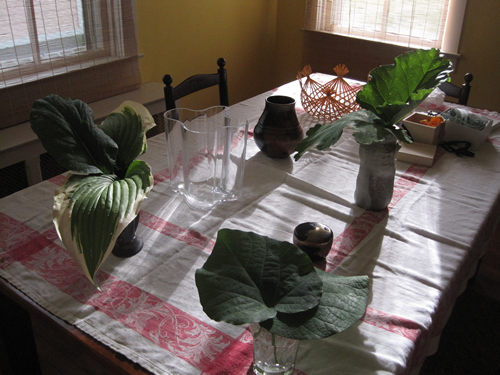
Olana, which is five minutes from my house, is the Persian style home of Hudson River artist Frederic Church. After an 18-month trip to Europe and the Middle East, Church hired architect Calvert Vaux and worked with him on the design of the mansion, which was constructed between 1870 and 1872. It sits on top of a hill with sweeping views of the Hudson River and the Catskills.
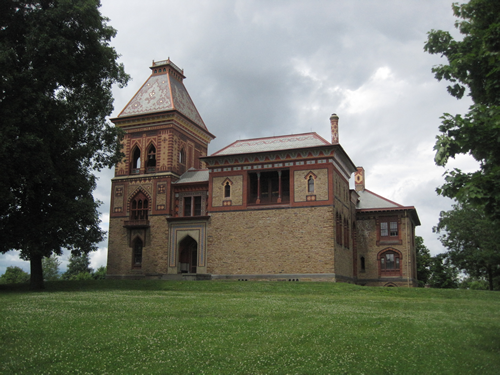
Olana is a grand and fascinating place
I had just returned from a month in Italy. The only garden I saw on the trip was the Boboli garden in Florence which is a huge, formal and cold place to my eyes. There were a lot of tall hedges and massive areas that implied wealth and prestige. It wasn’t interesting to me at all.
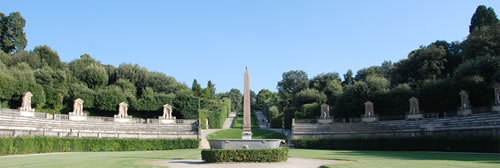
Boboli Garden in Florence, Italy
But now I was back home and at Olana. I decided to wander over to the flower garden which I hadn’t seen in a couple of years. It’s a tiny garden by a wall out of sight of the house. There are no grand gestures or sweeping views of the mountains. It’s a small and intimate place with a path that seems to meander with no haste. Truly a great garden with no artifice. Enjoy!
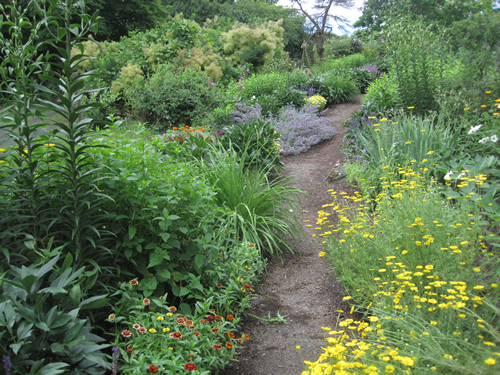
Flowers spilling over the path. A smoke bush in the far back.
Different heights of planting. The path curves.
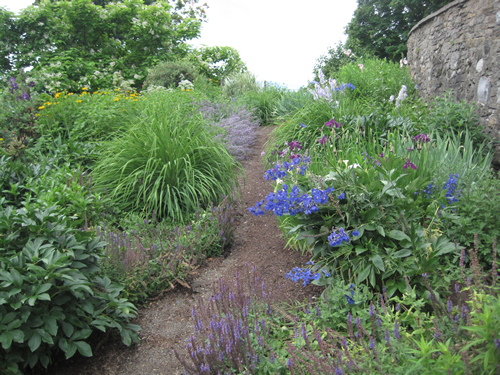
The path curves up and hugs the wall. Blue Delphinum, purple Catmint
and the leaves of peony and grasses lead the way.
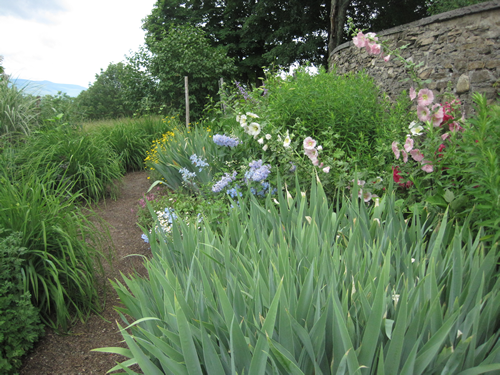
Almost to the end with the view in site. Leaves of Iris, pink Hollyhock and
a splash of yellow Heliopsis
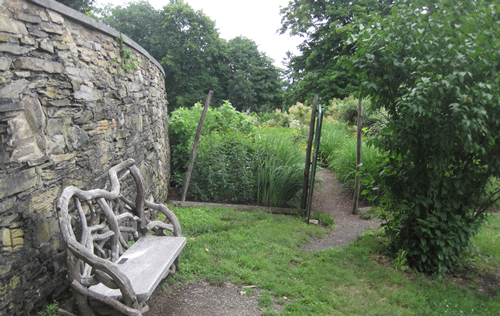
The garden is enchanting and how wonderful to find this bench where
I could sit and reflect on the quiet beauty of the place.
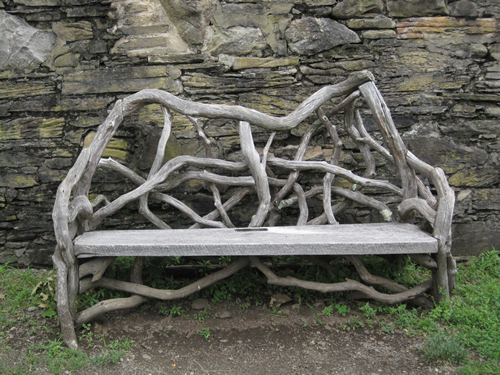
When I set out on my quest for a leaf to cover the Alvaro Alto vase I never
thought it would lead me to this magical place.
For more about Olana
Stones are priceless in Japan. I”ve seen gardens created in the 16th century that have stones and rocks imported from far away that are worth their weight in gold. Seriously. It”s part of the statement of a lord or king”s garden – or in Japan”s case – the Shogun”s garden. Just look at Versailles if you can”t travel to the east. It”s the same mentality.
I shy away from that sort of thing and rely on what is near at hand with only a suggestion of intent – not of wealth and power – but of a turning inward and coming back to a sense of self amidst the ordinary.
However, I can”t help but be in awe of this place:
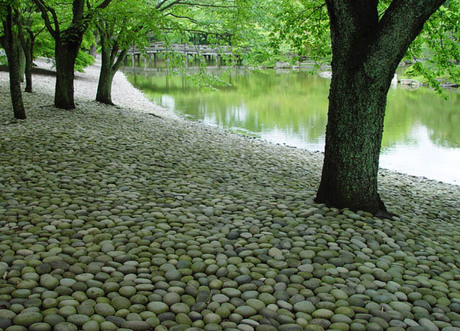
When Okubo Tadazane, lord of Odawara (present-day Kanagawa Prefecture) sent thousands of fist-sized rounded beach stones to Emperor Kokaku for his garden in 1815, each one came wrapped individually in silk cloth.
The garden should look wonderful in all seasons of the year. The evergreens at this time are the focal point: the round Boxwood balls, the floppy leaves of the Hemlock and the graceful structure of the Japanese Pines stand out in the spare winter landscape.
It’s at this time that we notice the fences, wicket gate and bones of hedges. Space, structure and pattern are now evident – hidden at other times of the year.
